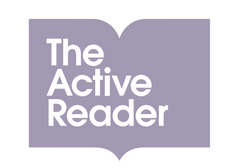
Skills To Practice At Home: Kindergarten Edition
Skills To Practice At Home: Kindergarten Edition
The kindergarten years set the stage for later learning. If a child develops a strong literacy foundation and a positive relationship with learning at this time, they will be set up for success as they continue on their educational journey.
We have rounded up a series of 6 skills that you can work on at home with your kindergarten age child. These activities are based in structured literacy concepts and geared to help lay a foundation to allow your child to experience success as they begin to develop their reading and writing skills.
The home is a powerful place, if we create a safe space where are children are inspired to practice their basic skills, imagine what they will bring to the classroom!
Skills to Practice at Home: Kindergarten Edition
1. Alphabet letter and sequencing activities
The alphabet is the first sequence of letters we learn. The ability to identify the order of the letters (as well as learn all of the letter names), allows a child to begin to understand the concept of a sequence which is a precursor to reading and writing.
Alphabet work can include:
- Letter tracing
- Bingo dabber letters
- Putting letter flash cards in order
- Playing with letter magnets
- Letter scavenger hunts
2. Name work
The most meaningful word a child knows is their name. Gaining the ability to recognize their name in their environment develops autonomy and independence.
Name work can include:
- Using flash cards to spell their name
- Displaying their name around the house
- Doing artwork using their name
- Practice writing their name and signing artwork
- Labelling their belongings
3. Working on basic lines strokes and shapes
Before we can expect a child to write letters, we need to strengthen their pre-writing skills. This includes the ability to hold a writing utensil and create basic lines and shapes.
Pre-writing activities include:
- Working on a joint picture together
- Tracing shapes
- Salt tray writing
- Shaving cream writing
- Play dough shapes
- Tracing letter with loose parts
4. Letter sound games
Learning the sounds letters make is one of the most important skills a child can learn. A great way to teach this skill is by using fun games to practice letter sounds. Games can develop a wide range of skills; but importantly, they build curiosity around language and reading. Further, the sense of accomplishment a child will feel when they complete a games, motivates them to try further learning tasks.
Letter sound games can include:
- Guess what letter a word begins with (e.g. cat)
- Categorize toys according to their sounds using flash cards
- Say a letter sound and ask them to come up with a keyword beginning with that sound
- Group objects according to their beginning letter and have your child identify what letter sound they all have in common
5. Cutting skills
Cutting builds hand strength and develops a child's fine motor skills to help with pencil control. Learning this skill requires a lot of practice and perseverance and allows you to coach them through a challenge. Your child can then bring this skill into the classroom and feel confident and useful.
Cutting activities include:
- Cutting out basic shapes
- Cutting strips of paper in half and creating a chain or bracelets
- Create a cutting tray by putting a variety of items on a tray and allowing your child to cut them all
- Leaf or flower cutting
- Wrap toys in string and ask your child to save them by cutting them free

6. Rhyming
Rhymes help children with phonemic awareness. They also teach them about the patters and structures of both spoken and written language. This awareness leads to reading and writing success and is an early indicator that there could be an issue with phonemic awareness and future success in reading. All of this can be worked on through practice!
Rhyming activities include:
- Reading books that rhyme
- Singing rhyming songs
- Choosing a word family ('at') and changing the first letter
- Choosing a group of words that rhyme and matching their pictures
- Grouping items that rhyme together
- Verbally discussing rhyming words
- Use flash cards to build rhyming words

We hope you enjoy these activities! Remember, the most important thing is to have fun with language and spark your child's curiosity.
The Active Reader





